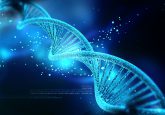Tackling tuberculosis in developing areas with an inexpensive, quick test

Tuberculosis (TB) is a major global health problem, especially in countries with developing health care systems; this is due in part to the lack of rapid, sensitive and low-cost diagnostic methodologies.
The development of such low-cost diagnostic methodologies is vital for low-resource countries to prevent the spread of TB, a highly infectious disease. To address this issue, a team from The University of Queensland (Australia) has developed an inexpensive and sensitive device, which can rapidly detect TB. Their findings where published recently in ACS Sensors.
Tuberculosis, caused by the bacterium Mycobacterium tuberculosis (Mtb), is typically screened for by physicians with a tuberculin skin test or an examination of an individual’s sputum under a microscope; however, these tests are not rigorously accurate and can lead to false positives. A more reliable test involves growing Mtb cultures – a process that takes weeks to complete.
An alternative quick and accurate diagnostic method for TB is a nucleic acid amplification test, which is expensive and requires a lab setting.
The team from Queensland set out to develop a test that did not suffer from the drawbacks associated with the previously mentioned methods. The researchers began by creating a modified nucleic acid amplification test that does not require expensive lab equipment to detect Mtb. The modified test, however, still used costly fluorescence technology to read the result. The team therefore substituted the fluorescence detector with a simple colorimetric assay.
The colorimetric assay utilizes the chemical oxidation of 3,3′,5,5′-tetramethylbenzidine (TMB) in the presence of the disease creating a blue hue visible to the eye. As TMB is electrochemically active, the researchers were also able to extend the method to electrochemical detection on cheap disposable electrodes.
The assays developed are inexpensive, costing US$3, provide results rapidly, 75 min, and are sensitive, approaching single cell sensitivity.
The researchers believe their assays could provide a means for public health officials to make important decisions related to the appropriate channeling of precious healthcare resources. They also believe their assays could provide part of the solution to reduce lengthy time-to-diagnosis commonly associated with conventional approaches in low resource settings.
Sources: Devising an inexpensive, quick tuberculosis test for developing areas; Ng YB, Wee EJ, West NP, Trau M. Naked-Eye Colorimetric and Electrochemical Detection of Mycobacterium tuberculosis—toward Rapid Screening for Active Case Finding. ACS Sens DOI: 10.1021/acssensors.5b00171 (epub ahead of print) (2015)





